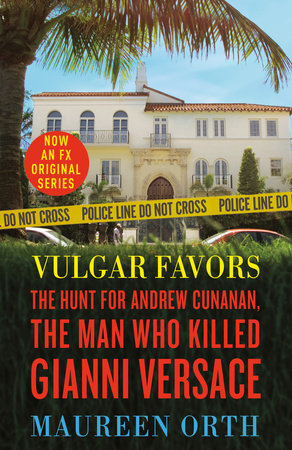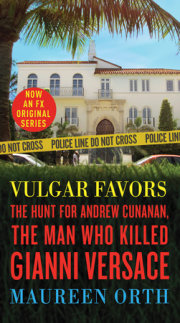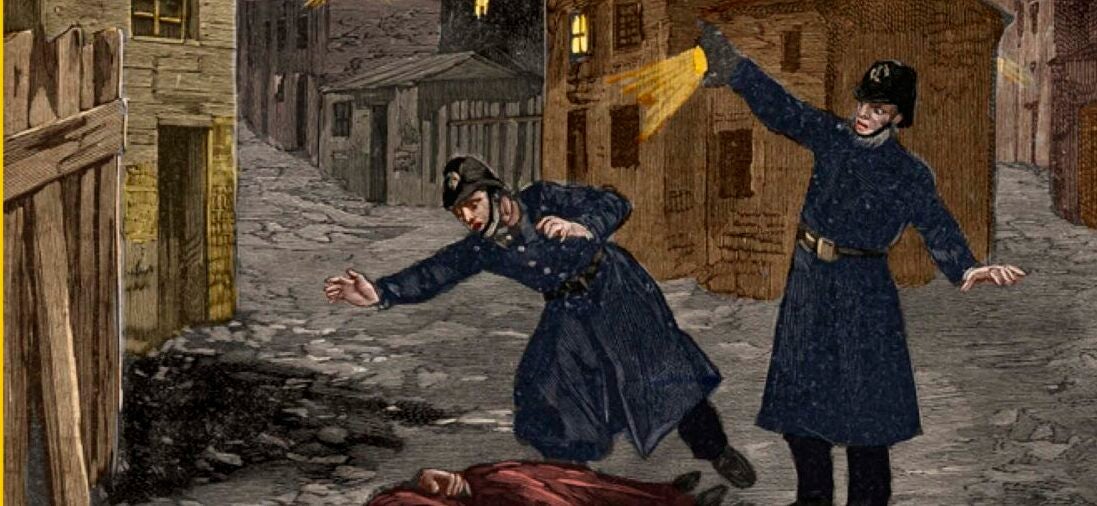PrologueThe phone rang about one A.M., and my husband sleepily caught the receiver.
"Is Maureen Orth there? Is this Maureen Orth, the writer?" The male voice was insistent.
"Who's this?"
"I want to discuss the article." A pause, then a click.
"It sounds like him," my husband told me.
"Who?"
"The guy you're writing about."
"What? You mean Andrew Cunanan?"
"Weird," my husband said. Then he flopped over and went back to sleep. But by then I was wide awake.
About ten days later, hours after Gianni Versace, the famed fashion designer and gay icon, was murdered, the phone rang again a little after one A.M. I was already booked on a morning plane to Miami to report the breaking story of Versace's murder, because the number-one suspect was Andrew Cunanan. By then I had been reporting on Cunanan for nearly two months for
Vanity Fair magazine--his favorite publication. I also had learned that he had met Versace several years earlier and that he was suspected of killing four other people, including his best friend and the only man he ever said he loved.
"Hello. Is Maureen Orth there?" My husband recognized the same gay male voice. "Who's calling?" But the person on the other end thought better of it. The long-distance background sound cut off abruptly. I will never know if I thereby lost the scoop of my life.
Under any other circumstances, appearing in
Vanity Fair would have been Andrew Cunanan's dream come true. By then, however, in early July 1997, he was about to become the subject of one of the largest manhunts in FBI history. Thousands of people would be looking for him, yet nobody knew where he was.
Nine days later, Andrew Cunanan's body was found on what would become an infamous Miami Beach houseboat. Moreover, the aftermath of his crimes and his cruel and tragic journey through America would reverberate for months. What began in the media misleadingly as a "gay lover's quarrel," confined to a closed but "out" gay world, built as Cunanan's murders became more heinous and bold into a story that catapulted him to the forefront of the mainstream press--leading the evening news, on the cover of both
Time and
Newsweek. But before Andrew Cunanan killed Gianni Versace and gained worldwide notoriety, he had already traversed a gay parallel universe in America today--traveling from the seamy, drug-addled underbelly of the demimonde to the cultured and privileged world of the rich and the closeted.
Andrew fit in anywhere. He could discourse about art and architecture, and he was a walking encyclopedia of labels and status. As a kept boy, he got all the way to the Gritti Palace in Venice and a house on Cap-Ferrat. But then he fell in love with a hardworking young architect and--ostensibly because the rich older man who paid his way wouldn't give him the model Mercedes he wanted--he walked out of the pampered world to which he'd always aspired.
No matter how much Andrew Cunanan got, he always wanted more--more drugs, kinkier sex, better wine. Somehow he had come to believe that they were his due. And why not? He was always the life of the party, the smartest boy at the table. But at twenty-seven he was also a narcissistic nightmare of vainglorious self-absorption, a practiced pathological liar who created alternate realities for himself and was clever enough to pull off his deceptions. In the trusting or superficial circles in which he traveled, Andrew made himself indispensable. Lurking just beneath the charm, however, a sinister psychosis was brewing, aided by Andrew's habits of watching violent pornography and ingesting crystal meth, cocaine, and various other drugs so prevalent in some circles of gay life today--but not spoken of. "Anyone who has done crystal and been on a bad streak can look at this whole thing and understand]," says Joe Sullivan, a former crystal meth user who knew Andrew in San Diego. "I cannot believe not one person has associated a crystal freakout with this."
As I reported Andrew Cunanan's story, it was up to me to try to unravel the lies and untangle the contradictions--he did not yield his secrets easily. He began life as a beautiful child of mixed Filipino and Italian heritage with an IQ of 147. But his parents had a desperately unhappy marriage, and they counted on their youngest child to save and validate them. Under tremendous pressure from them, the gifted little boy was never able to form a coherent adult personality. The more I learned about him, the sadder it was to see how drugs and illicit sex increasingly coarsened his instincts, how prostitution on many levels eventually left him lazy and unprepared. When the jig was up, he had no professional or moral resources to fall back on. He had been seduced himself by a greedy, callous, and pornographic world that proffered the superficial values of youth, beauty, and money as the maximum attainments of a happy life. In the end Andrew Cunanan, so witty and quick, the product of a fanatically Catholic mother a
nd a just as fanatically materialistic father, gave in to his mean darkness and inflicted incalculable pain on others.
In following the skewed path of Andrew Cunanan, I became fascinated with the idea that I was not merely reporting about a warped young man and his bloody violence. I, too, was making an offbeat odyssey through end-of-the-century America, where new communities had formed in the last two decades, where political correctness in the melt-resistant melting pot paralyzed many aspects of law enforcement and the media, where money papered over a lot of lapses. Some things, of course, are eternal, such as the ability of powerful families to block exposition of the truth and to keep their secrets hidden.
Throughout my travels I found that gays as a cohesive group are in dynamic, alternating stages of political formation. Their ability to organize locally directly affects their influence with law enforcement. In San Francisco and New York, Andrew would have been hard put to hide. In South Beach, a mecca created for tourist escape, on the other hand, the large gay community demands little in the way of protection. In fact, it often appears that they are in complete denial about needing protection of any kind, including sexual.
Beyond South Beach, I found denial throughout the country of widespread drug use as well as of structures designed to foster such use, both in the gay community and on the part of law enforcement, which seems uncomfortable with the idea of broaching certain subjects for fear it will be perceived as harassing gays. If the FBI were more familiar with the gay world of South Florida, for example, Andrew Cunanan, a Top Ten Wanted criminal, would never have been able to live freely at the Normandy Plaza hotel for nearly two months or to leave a stolen red truck in a parking garage for weeks on end. As it was, a nationwide manhunt that cost millions yielded little result. Kevin Rickett, the intense young FBI agent in charge of the Minnesota Fugitive Task Force for the Bureau, which led the national investigation, told me, "There were not many successful moments of the investigation, because we never were really close to him. We never did catch up with him."
The story, which leapt from coast to coast, kept taking me into areas I could not have imagined at the onset. I had no idea of the profound affect the O.J. Simpson trial has had on local and state prosecutors, who now are extremely reluctant to charge suspected killers on less than airtight circumstantial evidence. "O.J.'s tainted everything," Paul Scrimshaw, Miami Beach's lead detective in the Versace investigation, told me. "Everybody's afraid; nobody wants to look bad. Every investigation is now tainted because of O.J. Barry Scheck should be drawn and quartered."
It was heartening by the end to see the FBI, at least on the national level, make a real effort to redress its previous weaknesses. Andrew Cunanan's evil crimes turned out to be a positive catalyst for putting new practices into effect and for helping foster cooperation among police agencies as well as between the police and the gay community. To this day, however, although there is a national mechanism to trace a missing car, there is none that can find a missing person.
Andrew Cunanan also fueled a tabloid era of saturation coverage of sensational crime stories that O.J. had revived.
Hard Copy producer Santina Leuci says, "Cunanan had all the elements--sex, violence, a serial killer. And he's on the run, a whole police force looking for him, a whole country waiting for him to be caught." What happens when a story becomes the number-one story in America today? I was suddenly in the middle of the tidal wave. The tabloid media are the modern day equivalent of the circus sideshows of the early part of the century. We now have around-the-clock televised freaks we can all watch together every day and every night, and each year certain individuals are exalted to Exhibit Number One. Andrew Cunanan--"He's Gay! He's Sick! He Kills the Rich and Famous!"--occupied that space for a short while, only to be displaced by a princess.
I was amazed by how much and how fast money changes hands when a story such as this one explodes. A conventional print journalist is at a total disadvantage. A kind of frenzy takes hold in which the media coverage drives the police investigation and the political response, and anyone who wants to can participate through broadcast and print and the Internet with the grieving families at the funerals, with the beleaguered police, with the entire cast of characters. It's an all-day, all-night global soap opera. The overwhelmed families of victims are forced to feed the hungry beast. So are the cops and politicians.
I will never forget the day I was sitting in a mixed bar--one for both gays and lesbians--in the heart of the Castro district of San Francisco with a witty denizen, Doug Conaway, who directed my attention to a metal grille beside a bank building across the street. It was covered with dead bouquets, which had been placed there to commemorate Princess Diana's funeral. The bouquets, he said, were a way for the neighborhood to get in on the act. The neighborhood, it seemed, felt similarly proprietary toward Andrew.
"When I came home to hear that Versace had been shot and they think it's Cunanan, I thought, my God, he once lived in our neighborhood," Conaway confided. "If it weren't for Cunanan, we wouldn't have seen Diana at Versace's funeral, so someone from our neighborhood caused that. But then, when Cunanan's body was found, I was so disappointed. What am I supposed to go back to? Campaign finance reform?
"Thank God for Diana's death--it's been like a miniseries. Her death gave our street so much to do." He regarded me dryly, decided he was on a roll, and continued: "Now, if Elton John gets AIDS, and Liz Taylor goes to his bedside, and Liz Taylor has a stroke and she dies, and Michael Jackson goes to her funeral and his face falls off--it makes everyone feel the connection."
By the time I finished my reporting, I realized that I had been on a long, strange trip, from the United States Naval Academy at Annapolis to FBI headquarters in Washington, from the cornfields of the Midwest to the skyscrapers of Chicago, from Mr. S Leather in San Francisco to the San Francisco Opera. I walked the beaches of tony, closeted La Jolla and frolicked in the gay abandon of South Beach. I met important law-enforcement officials, crystal-meth dealers, homicide detectives, dungeon masters, and personal trainers. Some of my sources were in jail. I got to know police chiefs and $10,000-a-weekend male prostitutes--even the piano player in the whorehouse. Andrew Cunanan shook all of those worlds.
After he died, I tried to pick up the pieces.
Copyright © 1999 by Maureen Orth. All rights reserved. No part of this excerpt may be reproduced or reprinted without permission in writing from the publisher.






